Teaching English in Indonesia: My Life-changing Adventure Abroad
Learn how I followed my dream and set out on a once-in-a-lifetime adventure teaching English in Indonesia.
Hello! My name is Lee, and I’d like to share with you my incredible teaching experience in Indonesia. I have to say, I never imagined Indonesia to be like it was – its unique geography, volcanoes, cordilleras, lush verdant farms, or its 17,000 islands. Or that the people are so uniquely warm and welcoming. I hope this article reveals a lot about my experience and will go some way to inspiring you to hop on the plane yourself!
How did it all begin?
As so many of these things do, my journey started on the internet. There didn’t seem to be so many posts for Indonesia and I had my heart set on going there. Finally, I checked Workaway, and one advert in particular piqued my interest, so I jumped at the chance and clicked apply.

About a month before I left, I had my first interview with the team at the local school in Temanggung, Central Java. It was a Zoom call, the conversation flowed really well, and they even carried the laptop around to show me a little of the grounds and the school.
This first contact is always vital in my opinion. Prepare your questions well and try to ask about things such as class sizes, routines, local activities, distance from the nearest airport, and accommodation. If you forget something, send a follow-up email.
Unfortunately, for this job, the flight was not included, but as I’d planned to travel around Asia anywhere, I just saw it as a necessary cost. This is likely to be a concession you have to make when working in Indonesia.
Embracing the experience!
Upon landing, I was flooded with a lot of new sensations – the heat and the smell of fried street foods and fresh ginger, used to make Wedang Jahe, a sugary tea, all wafted in my direction.
The things that struck me at first were:
- The amount of tea and coffee. Being from the UK, I thought we would take the gold medal for tea drinking, but what I saw there was extreme – ginger tea, and jasmine, these seemed the most common.
- People want to have their photo taken with you – I mean perhaps dozens of times in one day, not kidding!
- I’m quite tall and restaurant tables are very low. So often I would try to jam my gangly legs under a table with no luck and would remain there very uncomfortable. I’m sure it’ll be no problem though for the vertically-challenged readers.
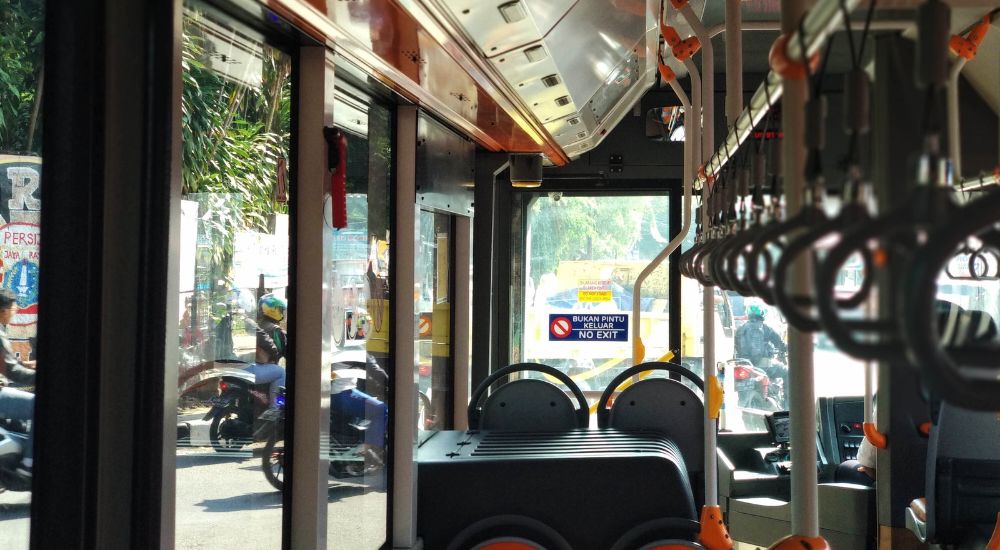
Some of the practicalities
The main language is Bahasa and it’s simple in many ways – in fact, within a few days, I had memorized the numbers up to twenty. You won’t regret devoting a bit of time before leaving to learn a few phrases – the people really appreciate it.
Despite there being a number of trains, especially in the East of Java, the most common form of interstate transport is the public buses. Money is often collected during the journey, so don’t expect to go and get your ticket from a counter or a machine.
💡 Big tip – get the Grab Taxi App – it’s the Uber of Asia. With this I could quickly head into Jakarta, then to the main bus terminal and on to Temanggung.
During my time in Indonesia, I had no problem with the food. It’s often simple and generally not that spicy, which I’m sure will be a sigh of relief for some. The classic dishes are Ayam Goreng (fried chicken) and Nasi Goreng (fried rice). As when visiting any Asian country, I would recommend buying food from local street vendors rather than from restaurants.
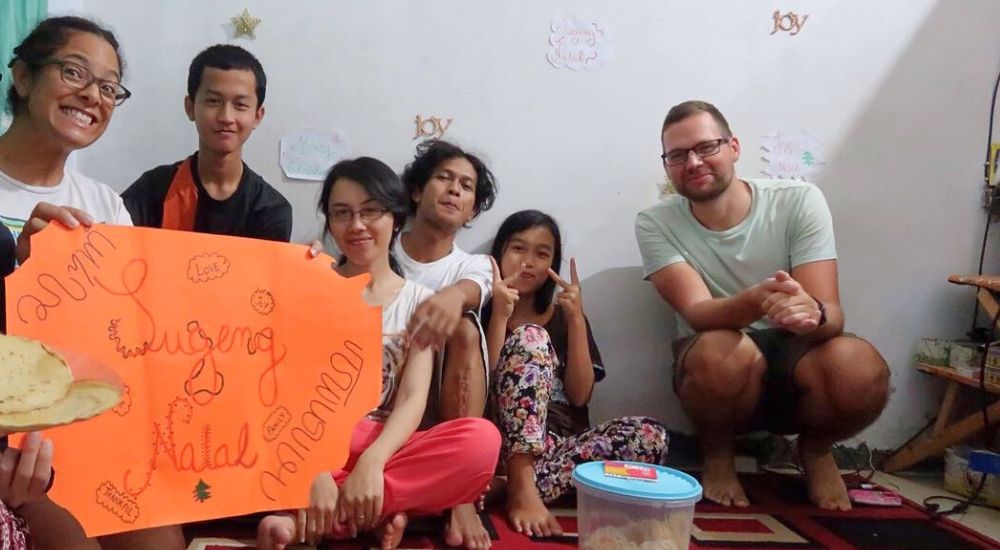
For me, I knew before the trip that accommodation was not going to be a problem. I had a homestay with a local family (pictured above) and some other teachers. Space was kind of limited but it was wonderful to sit with the family in the evenings, help the kids with their English, learn about the culture, and – best of all – play many games of Scrabble.
Overall, communication was very easy. Many of my colleagues at the school spoke very good English. Many of the younger people, likely with the help of their mobile phones, have embraced English, learning so they can watch live-streaming gamers on YouTube, or listen to Western music. On the street, it was a little more point and hope, but the people had bags of patience.
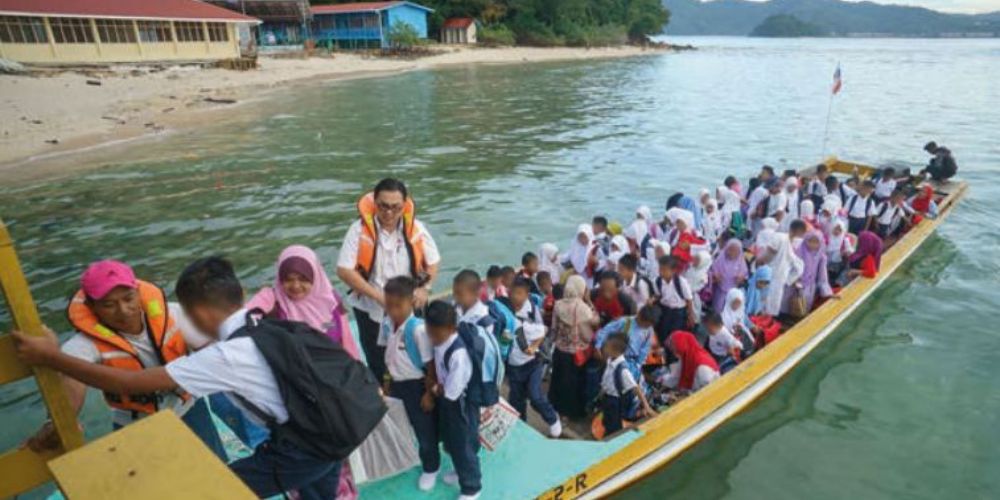
Time to teach
I was a little nervous about meeting my group, but after a few introductions, I saw that it was going to be a very positive experience. We played a few name games and the rapport was easy to build.
A bit surprising though was the mixture of ages – my group was aged between 11 and 15. I mention this because, as a seasoned TEFL teacher, I know the impact it can have on class dynamics. Also, I’d had some experience with larger class sizes, but I hadn’t expected to have forty students! But despite this, they were incredibly easy to settle and hardly any classroom management was needed.
Minimal materials were given and classroom tech such as interactive whiteboards and tablets were nowhere to be seen. I realised in those first few weeks just how important it was to have completed a TESOL/TEFL course. Thanks to my training, I was able to adapt quickly and prepare effective teaching techniques and activities that work well just with a blackboard. In many ways, I prefer teaching in this old-school way – less can go wrong.
What was truly warming though, about the students, was how much they wanted to help – both practically in the class by offering help handing out things, or just in a personal way, like trying to teach me some basic phrases in Bahasa. I think that many loved the opportunity to chat and ask questions to a native speaker.
Final thoughts
I would say overall that Indonesia really struck a chord with me. I’ve kept in contact with many people I met both during my time teaching and whilst travelling. It felt completely safe, the people were wonderful, and it was incredible to learn about local life.
If you’re considering teaching in Indonesia, the most important consideration should be location. For me, a small place, kind of off the beaten track, was fine, but for some, this can get very lonely. Also, think about giving a boost to your application and your abilities in the classroom by signing up for a TESOL/TEFL course before beginning the adventure. And, of course, get yourself some classes on Bahasa. Why not? It’s fun!
All in all, teaching in Indonesia was a once-in-a-lifetime adventure that left me with cherished memories of warm hospitality, cultural immersion, and a deep connection to the local community.
Want to start your teaching career? Get TESOL/TEFL certified:
To teach English overseas and online you’ll need to have an accredited and recognized TESOL/TEFL certificate.
With World TESOL Academy’s accredited 120-hour TESOL/TEFL course you’ll develop the necessary skills needed to launch your teaching career.
Or click here to get a free preview of the course.
.






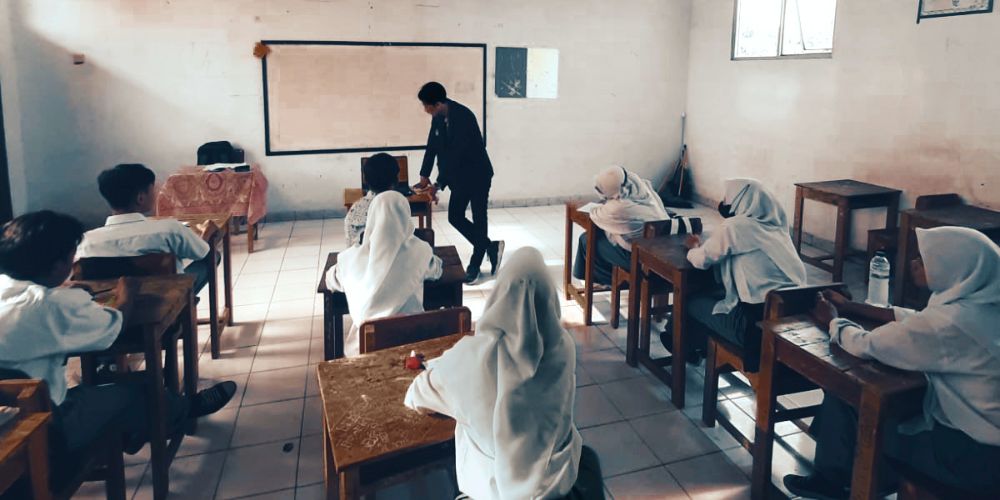

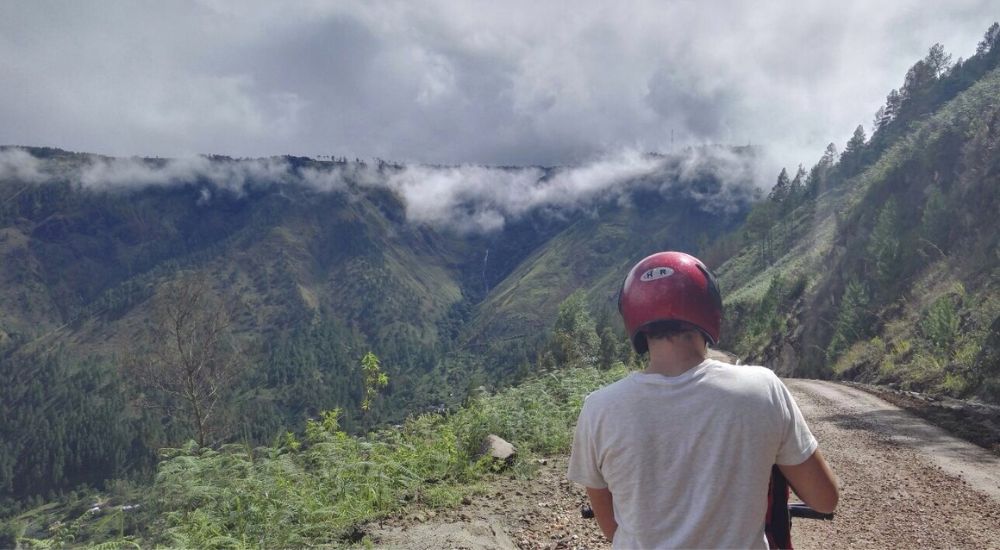



Leave A Comment